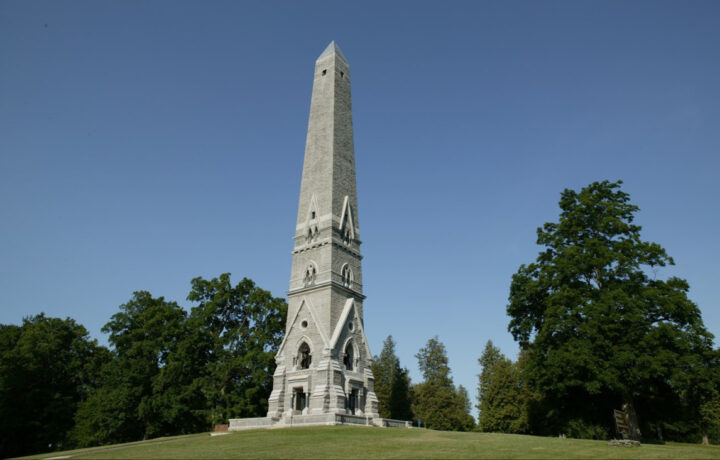Summer is winding down and the kids are heading back to school, but when is a better time to plan your next trip out with your kids, your spouse, or your best friend? Maybe you have someone in your life who is dying to see a few historical monuments that aren’t on the path that is more often trod? It’s time to visit the oldest military monuments in the U.S.
The 5 Oldest Military Monuments in the U.S.
Some military monuments are lesser-known but impactful, here is another list of monuments that are not only the oldest in the country but are some of the most important monuments that were probably just replaced with something bigger and fancier. These U.S. monuments continue to reflect the country’s rich history and commemorate key figures, battles, and events.
1. Bunker Hill Monument (Massachusetts)
Dedicated in 1843, this 221-foot granite obelisk in Boston commemorates the Battle of Bunker Hill, one of the first major battles of the American Revolutionary War in 1775. The Battle of Bunker Hill demonstrated the colonists’ resolve and ability to stand up to the British, even though they were ultimately forced to retreat. It also served as a stark warning to the British that the conflict would be longer and more challenging than they had anticipated. The battle became a symbol of American determination and helped galvanize support for the Revolutionary cause.
2. Washington Monument (Maryland)
The original Washington Monument, located in Boonsboro, MD, was completed in 1827. It was the first monument dedicated to George Washington and predates the more famous Washington Monument in Washington, D.C. which was completed more than two years later. The 40-foot-tall tower honors Washington as the first President of the United States. The monument sits along the Appalachian Trail near the summit of South Mountain’s Monument Knob
3. Nathan Hale Statue (Connecticut)
Erected in 1890 in New London, CT, this statue honors Nathan Hale, an American soldier and spy during the Revolutionary War who was captured and executed by the British in 1776. The famous quote “I only regret that I have but one life to lose for my country,” was said by Hale. The Sons of the Revolution in the State of New York erected a bronze statue in City Hall Park, mistakenly believing it to be the site of Hale’s execution. In reality, the execution occurred about four miles away, near what is now 66th Street and 3rd Avenue on the Upper East Side.
4. Fort Moultrie Monument (South Carolina)
Located on Sullivan’s Island, this site honors the Battle of Sullivan’s Island in 1776, where American forces successfully defended against a British naval attack. The fort itself dates back to the Revolutionary War era. The fort was initially constructed from palmetto logs and sand, which proved surprisingly effective in absorbing cannon fire during the battle where American forces successfully repelled a British naval attack. Named in honor of Colonel William Moultrie, the fort was later rebuilt and expanded, serving as a coastal defense installation through multiple conflicts, including the War of 1812 and the Civil War. Fort Moultrie now stands as part of the Fort Sumter and Fort Moultrie National Historical Park, symbolizing the resilience and strategic importance of Charleston in American history.
5. Saratoga Monument (New York)
Completed in 1883, this monument commemorates the American victory at the Battle of Saratoga in 1777, a turning point in the Revolutionary War. According to the monument’s website, the Monument, which features Gothic and Egyptian-styled elements, is a rock-faced granite obelisk that stands 154 ½ feet tall. Aptly located in the Village of Victory, the Monument is situated on a high bluff upon the grounds of Burgoyne’s last camp and overlooks the scenic Hudson Valley. The cornerstone contains a U.S. flag, a 1777 silver coin bearing the image of King George III, an 1877 U.S. silver half dollar, a memorial to the opening of the New York and Canada Railway, Bennington Battle Monument Association documents, and 21 newspapers.”
These monuments serve as reminders of the nation’s military heritage, paying tribute to those who fought and sacrificed in key moments of American history. These monuments continue to endure and continue to remind us that although there might be another monument, another conflict, or another museum, we will continue to remember the history, the sacrifice, and the places that are our origin story as a country.
As I said earlier, these monuments continue to stand against time and the elements to remind each and every generation that our history is here to stay, it is here to be remembered, it is here to be learned from, and just like our country, it is here to teach the world that we will endure.




